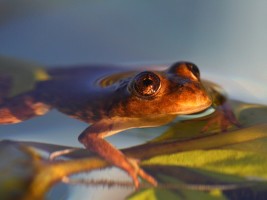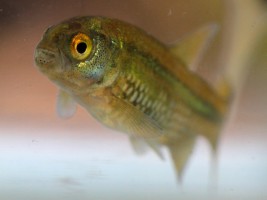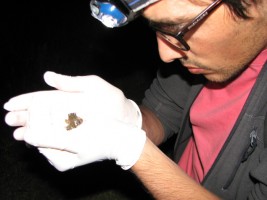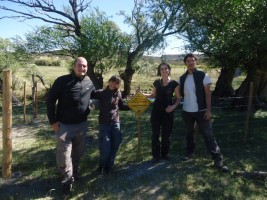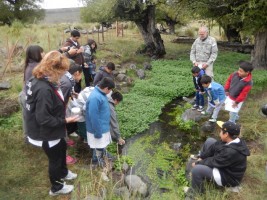Towards the long-term conservation of two endangered species, the Valcheta Frog and the Naked Characin

The Valcheta Frog is a micro endemic species, living in the thermal springs that originate the headwaters of the Valcheta stream (Argentina). This species was categorized as Critically Endangered at the IUCN Red List and is at rank 33º among the 100 EDGE amphibians’ species worldwide.
The Naked Characin is a small sized fish which lacks scales at adult stages. The species is micro endemic from the headwaters of the Valcheta stream where it shares habitats with the Valcheta frog. It is categorized as Endangered but a re-assessment is needed since the species might fall in the Critically Endangered category.
Since both species share a same habitat, they face similar threats:
- The access of livestock to key sites. Cows, horses, sheep and goats feed on and trample on aquatic habitats, removing the shore vegetation that frogs and characines use as shelter, to feed and as reproductive sites.
- The presence of an exotic trout which predates on frogs and characines, causing a decline and isolation.
- Current human management of the water resource, which modify key habitats for both endangered species.
Through this project, Fundacion Azara will alleviate threats, restore habitats and reinforce wild populations of both species in a frame of local community engagement. They will increase the long-term viability of these species and their habitat.
Final report summary (June 2019):
During the funded period, 3 key sites have been fenced to prevent cattle access, and became sanctuaries for both species. Vegetation came back. Stones have been disposed to be used as shelters for the characin and the frog. A frog reintroduction program has been successfully set up in one of the sites it had totally disappeared from.
Alternatives have been offered to landowners: underground pipes to avoid irrigation systems splitting the watercourse, water fountains for avoiding cows to trample on vegetation when they drink, watertank to avoid captation via a dam.
An action plan against the trout, which is an invasive species, has been set up.
Sites restoration will continue and alternative proposals to landowner will continue. Also, an ecotourism project is under being studied.






